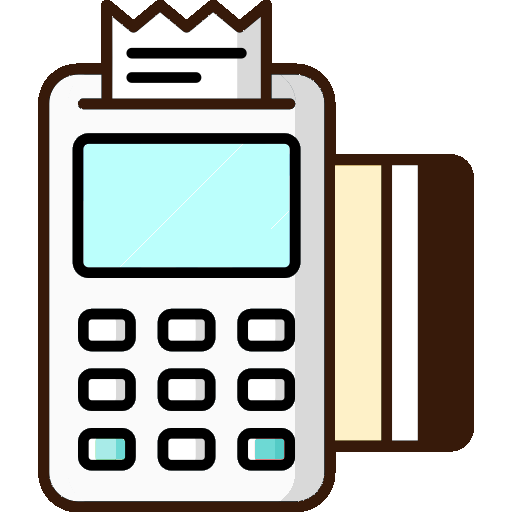Find Your Perfect Furniture Height
Get comfortable, ergonomic dimensions in seconds
Complete Dining Chair Guide
Everything you need to know for the perfect dining setup
Standard Measurements
- Dining Table: 28-30" (71-76cm) high
- Chair Seat: 17-19" (43-48cm) high
- Seat Depth: 15-17" (38-43cm)
- Seat Width: 16-20" (41-51cm)
Space Requirements
- Chair spacing: 24-30" (61-76cm) apart
- Pull-out space: 32-36" (81-91cm) behind chair
- Walkway: 44-48" (112-122cm) minimum
- Table overhang: 10-12" (25-30cm)
Weight Capacity
- Standard chairs: 250-300 lbs
- Heavy-duty: 400+ lbs
- Bar stools: 200-250 lbs
- Consider daily use frequency
Comfort Checklist
Traditional Dining Chair
Best for: Formal dining rooms, classic decor
- Upholstered seat & back
- Wooden frame construction
- Higher back for support
- Often includes armrests
Modern Minimalist
Best for: Contemporary spaces, easy cleaning
- Clean lines, simple design
- Metal or molded materials
- Stackable options available
- Lower maintenance
Counter Height Stool
Best for: Kitchen islands, casual dining
- 24-26" seat height
- Footrest for comfort
- Swivel or stationary
- Space-saving design
Bar Height Stool
Best for: Home bars, pub tables
- 28-30" seat height
- Must have footrest
- Often adjustable height
- Sturdy base essential
🌳 Wood
Pros:
- Durable and long-lasting
- Classic, timeless look
- Can be refinished
- Warm, natural feel
Cons:
- Higher maintenance
- Can scratch or dent
- Sensitive to humidity
- More expensive upfront
🏗️ Metal
Pros:
- Very durable
- Modern appearance
- Easy to clean
- Lightweight options
Cons:
- Can feel cold
- May show fingerprints
- Limited color options
- Can be noisy
🛋️ Upholstered
Pros:
- Most comfortable
- Many fabric options
- Sound dampening
- Customizable look
Cons:
- Hardest to clean
- Shows wear over time
- Can absorb odors
- Not pet-friendly
Before You Buy
- Test sit: Spend at least 5 minutes in the chair
- Measure twice: Verify all dimensions before ordering
- Consider lifestyle: Kids, pets, entertaining frequency
- Think long-term: Will this work in 5 years?
Room Considerations
- Natural light: Consider sun fade on fabrics
- Traffic flow: Ensure easy movement around table
- Storage needs: Stackable chairs save space
- Style cohesion: Match existing decor
Assembly & Setup
- Read instructions: Completely before starting
- Check hardware: Ensure all pieces included
- Level floors: Use furniture pads if needed
- Break-in period: Allow time for cushions to settle
Budget Smart
- Quality investment: Good chairs last 10+ years
- Sales timing: End of season clearances
- Mix and match: Different styles can work together
- Warranty matters: Look for at least 1 year coverage
🎯 Quick Size Finder
Complete Office Desk Guide
Create the perfect ergonomic workspace for productivity and health
Perfect Posture Checklist
Monitor Height
Top of screen at or below eye level, 20-26 inches away
Chair Position
Feet flat on floor, thighs parallel to ground
Keyboard & Mouse
Elbows at 90°, wrists straight and floating
Back Support
Lower back supported, shoulders relaxed
Key Measurements
Standard Office Desk
Height: 28-30" (71-76 cm)
Width: 48-60" (122-152 cm)
Depth: 24-30" (61-76 cm)
Best For:
- Traditional office work
- Computer-based tasks
- Budget-conscious buyers
- Fixed work positions
Adjustable Height Desk
Sit Range: 28-30" (71-76 cm)
Stand Range: 38-42" (97-107 cm)
Adjustment: Electric or manual
Best For:
- Health-conscious workers
- Shared workspaces
- Long work sessions
- Back pain prevention
L-Shaped Corner Desk
Height: 28-30" (71-76 cm)
Width: 48-72" per side
Corner Space: Maximizes area
Best For:
- Multi-monitor setups
- Corner office spaces
- Multiple work activities
- Storage optimization
Compact/Small Desk
Height: 28-30" (71-76 cm)
Width: 32-42" (81-107 cm)
Depth: 16-20" (41-51 cm)
Best For:
- Small apartments
- Bedroom offices
- Laptop-only work
- Student spaces
Position Your Desk
- Place perpendicular to windows to avoid glare
- Ensure adequate space around desk (36" behind chair)
- Position near power outlets for easy cable management
- Consider natural light for mood and productivity
Adjust Chair Height
- Set seat height so feet rest flat on floor
- Thighs should be parallel to ground
- Use footrest if chair doesn't adjust low enough
- Adjust armrests to elbow height
Set Monitor Position
- Top of screen at or slightly below eye level
- Distance: arm's length away (20-26 inches)
- Tilt screen back 10-20 degrees
- For dual monitors, angle both toward you
Organize Accessories
- Keep frequently used items within arm's reach
- Position keyboard and mouse at elbow height
- Use document holder next to monitor
- Organize cables with management solutions
💡 Lighting Optimization
Movement & Breaks
20-20-20 Rule:
Every 20 minutes, look at something 20 feet away for 20 seconds
Hourly Movement:
- Stand and stretch for 2-3 minutes
- Walk around the office or room
- Do simple neck and shoulder rolls
- Alternate between sitting and standing
Desk Exercises
Neck & Shoulders:
- Gentle neck rotations (5 each direction)
- Shoulder blade squeezes (hold 5 seconds)
- Upper trap stretches (hold 15 seconds)
Wrists & Arms:
- Wrist circles (10 each direction)
- Prayer stretches (hold 15 seconds)
- Arm crosses (hold 10 seconds each)
Mental Health
Productivity Breaks:
- Take a 5-10 minute break every hour
- Step outside for fresh air when possible
- Practice deep breathing exercises
- Keep plants nearby for stress reduction
Workspace Wellness:
- Personalize space with meaningful items
- Maintain good air quality and temperature
- Minimize clutter for mental clarity
- Use calming colors in decor
Warning Signs
When to Adjust Setup:
- Neck or shoulder pain
- Eye strain or headaches
- Wrist or forearm discomfort
- Lower back pain
- Fatigue after short work periods













































 Gifts
Gifts 






